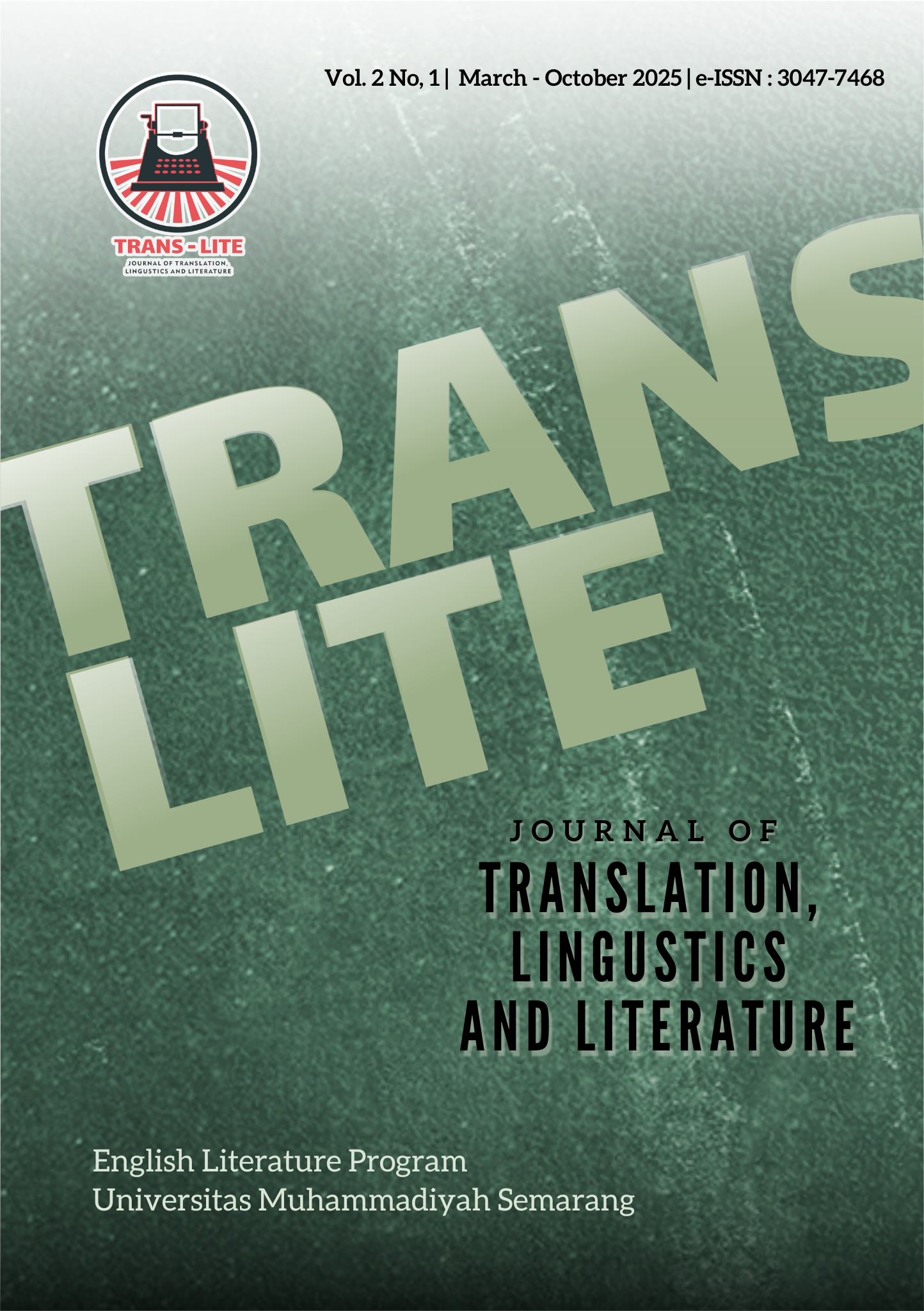Investigating Anxiety Levels and Factor Between Gender in English Language Learning Among Diploma in English Students
DOI:
https://doi.org/10.26714/translite.v2i1.730Keywords:
Anxiety, ESL, Gender, Communication, Evaluation, AssessmentAbstract
This study investigates anxiety levels among male and female students enrolled in a Diploma in English program at the tertiary level, focusing on three key factors which are communication apprehension, fear of negative evaluation, and test anxiety. The study employs both qualitative and quantitative methods, collecting data through questionnaires and interviews to provide a comprehensive understanding of the topic. The findings reveal that both genders experience anxiety to a similar extent. Male and female students experience anxiety from all three factors. Interview data further clarify similarities and differences in the aspects of these factors that cause anxiety. Implications for educators include the necessity of creating supportive, non-judgmental learning environments and implementing targeted interventions, such as additional grammar support for male students and stress management activities for female students. Future research should consider larger, more diverse samples and explore the impact of different teaching methods and technological tools on reducing language learning anxiety. This study contributes to the field by highlighting the importance of addressing anxiety to enhance ESL learners' academic success and overall well-being.
References
Alhaisoni, E. (2012). Language learning strategy use of Saudi EFL students in an intensive English learning context. Asian Social Science, 8(13), 115-127. https://doi.org/10.5539/ass.v8n13p115
Ansarin, A. A., & Zeynali, S. (2012). Exploring the gender effect on EFL learners’ learning strategies. Theory & Practice in Language Studies, 2, 1614-1620. https://doi.org/10.4304/tpls.2.8.16141620
Aydin, S., Akkaş, F. D., Türnük, T., Beydilli, A. B., & Saydam, İ. (2020). Test Anxiety among Foreign Language Learners: A Qualitative Study. Qualitative Report, 25(12)
Dewaele, J. M., & MacIntyre, P. D. (2016). Foreign language enjoyment and foreign language classroom anxiety: The right and left feet of the language learner. Positive psychology in SLA, 215(236), 9781783095360-010.
Halimi, F., Daniel, C. E., & AlShammari, I. A. (2019). The manifestation of English learning anxiety in Kuwaiti ESL classrooms and its effective reduction. The Journal of Classroom Interaction, 60-76.
Heng, C. S., Abdullah, A. N., & Yusof, N. B. (2012). Investigating the Construct of Anxiety in Relation to Speaking Skills among ESL Tertiary Learners. 3L: Southeast Asian Journal of English Language Studies, 18(3).
Horwitz, E. K., Horwitz, M. B., & Cope, J. (1986). Foreign language classroom anxiety. The Modern language journal, 70(2), 125-132.
Hwa, S. P., & Peck, W. K. (2017). Gender differences in speaking anxiety among English as a second language learners in a Malaysian tertiary context. International Journal for Studies on Children, Women, Elderly and Disabled, 2(6), 108-117.
Latif, A., & Binti, A. (2015). A study on English language anxiety among adult learners in Universiti Teknologi Malaysia (UTM). Procedia-Social and Behavioral Sciences, 2008, 223-232.
Mustapha, W. Z. W., Ismal, N., Singh, D. S. R., & Alias, S. E. (2010). ESL students communication apprehension and their choice of communicative activities. Asean Journal Teaching and Learning in Higher Education, 2(1), 23-29.
Niazi, M. M., Ahmed, S., & Khanc, D. S. (2023). Uncovering the Determinants of English Language Anxiety among Undergraduate Learners in Pakistan: A Study at a Private University in Pakistan. 219-238.
Rafek, M. B., Abd Karim, R. B., & Awaludin, F. A. B. Fear of Negative Evaluation in Second Language Learning (sub-theme: 15).
Sabbah, S. S. (2017). The Factors that Affect Qatari College Students’ Motivation and Attitudes to Learn English. Mediterranean Journal of Social Sciences, 8(1), 259-269.
Taber, K. S. (2018). The use of Cronbach’s alpha when developing and reporting research instruments in science education. Research in science education, 48, 1273-1296.












